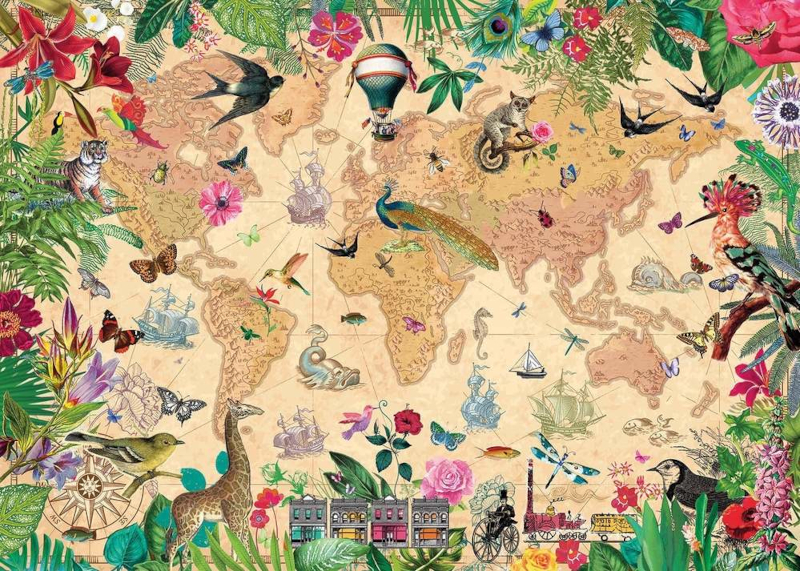A World of Life 1000 pcs Gibsons
Puzzle Number: G7202


Puzzle Description
A World of Life is a 1000 puzzle from Gibsons designed by Amanda Hillier. It measures 68 x 49 cms when complete and is made of 100% recycled premium jigsaw puzzle board which allows the puzzle to be made over and over again without any loss of quality.
Map puzzles have been with us for some time and, in fact, that is how puzzles got started by the London mapmaker, John Spilsbury back in the 18th century. The more usual map puzzle would have been one of the then current map of the world split into two touching circles. Some more recent map puzzles have added a theme such as, in this case, animals. Without giving away too much, it is highly unlikely ypu will encounter a tiger in the Canadian Rockies or, for that matter, a giraffe wandering around Tierra del Fuego at the southern tip of South America.
All manner of sea creatures abound and they were drawn no doubt as sailors thought them to exist; this is how the notion of mermaids came about. Half woman, half fish does have a rather complex appeal which is alluring and dangerous at the same time. Become seduced by the bewitching song of the mermaid and you will likely come to a watery end. There are many drawings of other monstrous and fictional sea creatures as well as more exacting and accurate drawings of insects.
The borders around the map are comprised of the natural world is it existed probably at the same time as the hot air balloon at the top of the puzzle and the old fashioned metal and wooden bicycle which didn't come with pedals at the bottom of the puzzle. The pale vessels strewn across the oceans even predate the flying apparatus and perambulator and might go back in time to the 15th century.
At that time taking such a journey was a most risky proposition and was usually carried out by men in desperate circumstances. Nevertheless backed by a wealthy patron and sponsor such as the King of Spain both North and South America were discovered by such swashbucklers who often after having endured a hazardous crossing had to contend with inhospitable local conditions as well as mysterious people.
In the case of Francisco Pizarro who discovered Peru in 1532 after crossing the Atlantic and then parts of the freezing Andes he was rewarded with heaving quantities of gold which was then sent back to Spain. Pizarro's exploits loom large in the infamy of men's conquests of indigenous and technically inferior peoples.